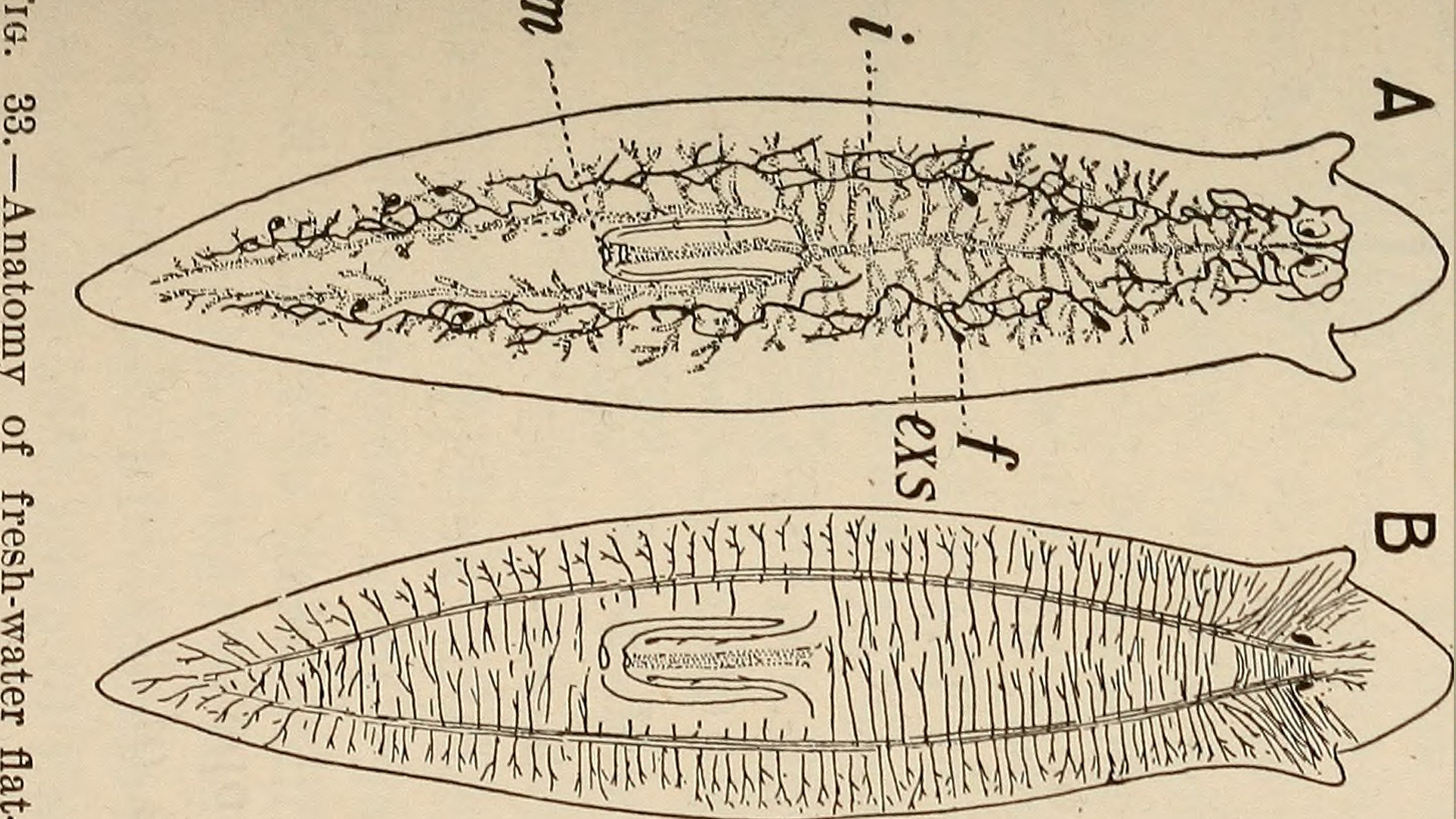Planarians

Planarians are bilaterally symmetric metazoans that possess almost unlimited regenerative capacities and that have been a classic regeneration model for over a century. Planarians have cephalic ganglia (the brain), two ventral nerve cords, and many sensory neurons. All cells of the nervous system can be regenerated following injuries of myriad types, including complete decapitation. Therefore, robust mechanisms for production of new neuron types in the proper numbers and patterns exist. Planarian regeneration involves a population of adult pluripotent stem cells (the neoblasts), which become involved in the regeneration of the entire nervous system. For more info on the planaria system and its place in the study of nervous system regeneration, visit Peter Reddien’s lab website.
Image from D.S. Jordan and V.L. Kellogg, Animal Studies, 1903, public domain.

